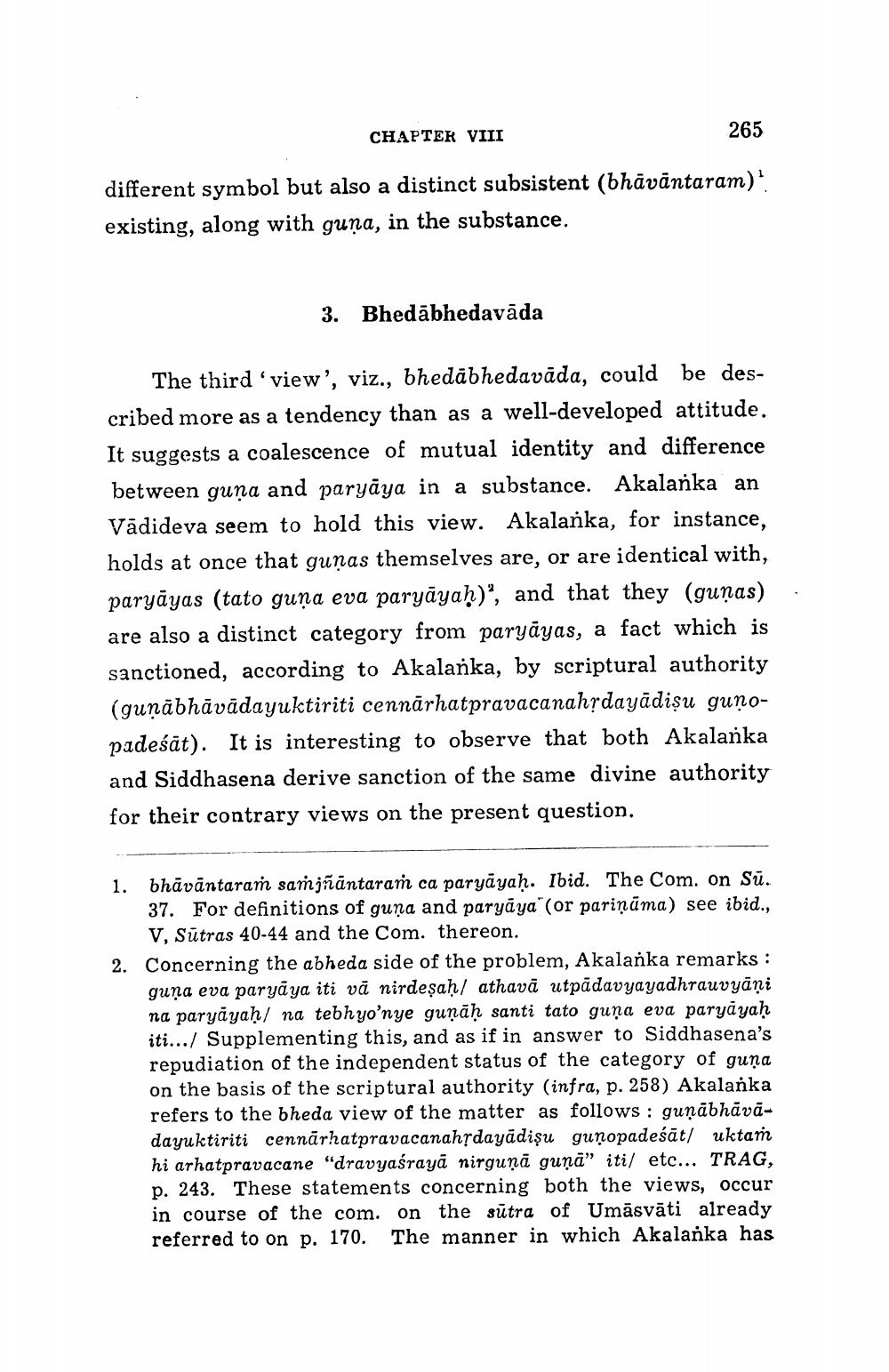________________
CHAPTER VIII
265 different symbol but also a distinct subsistent (bhāväntaram) existing, along with guņa, in the substance.
3. Bhedābhedavāda
The third 'view', viz., bhedābhedavāda, could be described more as a tendency than as a well-developed attitude. It suggests a coalescence of mutual identity and difference between guņa and paryāya in a substance. Akalanka an Vadideva seem to hold this view. Akalanka, for instance, holds at once that guņas themselves are, or are identical with, paryāyas (tato guņa eva paryāyaḥ)", and that they (gunas) are also a distinct category from paryāyas, a fact which is sanctioned, according to Akalanka, by scriptural authority (qunābhāvādayuktiriti cennārhatpravacanahrdayādişu gunopadeśāt). It is interesting to observe that both Akalanka and Siddhasena derive sanction of the same divine authority for their contrary views on the present question.
1. bhāvāntaram samjñāntaraṁ ca paryāyaḥ. Ibid. The Com. on Sū.
37. For definitions of guna and paryāya" (or pariņāma) see ibid., V, Sūtras 40-44 and the Com. thereon. Concerning the abheda side of the problem, Akalanka remarks: guņa eva paryāya iti vā nirdeşaḥ/ athavā utpadavyayadhrauvyāni na paryāyaḥ/ na tebh yo'nye guņāḥ santi tato guņa eva paryāyaḥ iti.../ Supplementing this, and as if in answer to Siddhasena's repudiation of the independent status of the category of guna on the basis of the scriptural authority (infra, p. 258) Akalanka refers to the bheda view of the matter as follows: guņābhāvādayuktiriti cennārhatpravacanahsdayādişu guņopadeśāt/ uktam hi arhatpravacane "dravyaśrayā nirguņā guņā” iti/ etc... TRAG, p. 243. These statements concerning both the views, occur in course of the com. on the sūtra of Umāsvāti already referred to on p. 170. The manner in which Akalanka has




